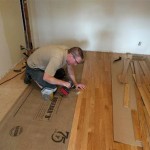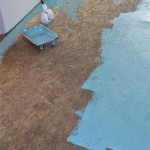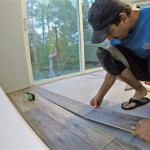How to Lay Floating Wood Flooring on a Concrete Floor
Floating wood flooring is a popular choice for homeowners due to its ease of installation, affordability, and attractive aesthetic. Unlike traditional wood flooring, which requires nailing or gluing to the subfloor, floating wood flooring is installed directly on a concrete floor using a locking system. This makes it a great DIY project, especially for those with limited experience in flooring installation. This article provides a step-by-step guide on how to lay floating wood flooring on a concrete floor.
Preparing the Concrete Floor
The success of your floating wood flooring installation hinges on a well-prepared concrete floor. A smooth, even surface is crucial for the planks to interlock properly and prevent future squeaking or unevenness. Here's a breakdown of the preparation process:
- Clean the floor: Thoroughly sweep and mop the concrete floor to remove dirt, debris, and any existing coatings.
- Repair cracks and imperfections: Use a concrete patching compound to fill any cracks, holes, or unevenness. This will ensure a smooth base for the flooring. Wait for the patching compound to cure completely before moving on.
- Apply a moisture barrier: Concrete floors can release moisture, which can damage wood flooring. Apply a moisture barrier, such as a vapor barrier or a moisture-resistant underlayment, to prevent this issue.
- Level the floor: If the concrete floor is significantly uneven, consider using a self-leveling compound to create a smooth surface. This is especially important if you are installing a thin wood flooring.
Installing the Underlayment
Underlayment serves as a buffer between the concrete floor and the wood flooring. It provides insulation, sound dampening, and a more comfortable walking surface. Depending on your needs and budget, you can choose from different types of underlayment, including foam, cork, or rubber.
- Roll out the underlayment: Begin by unrolling the underlayment at the furthest corner of the room. Ensure that the seams of the underlayment overlap by at least 6 inches to prevent gaps.
- Secure the underlayment: Use staples or a special underlayment tape to secure the underlayment to the concrete floor.
- Check for moisture: After installing the underlayment, allow it to sit for at least 24 hours to ensure it is fully acclimated to the room's temperature and humidity. This will help prevent moisture issues in the future.
Laying the Floating Wood Flooring
Once the floor is prepared and the underlayment is installed, you can start laying the floating wood flooring. This process involves interlocking the planks together to create a seamless floor without nailing or gluing them to the subfloor.
- Start at the longest wall: Begin laying the first row of planks against the longest wall of the room. Make sure the planks are aligned with the wall and leave a 1/4-inch expansion gap around the perimeter of the room.
- Use a tapping block: Use a tapping block and a rubber mallet to gently tap the planks together, ensuring that the tongue and groove system locks securely.
- Stagger the joints: To avoid creating weak points in the floor, stagger the joints of each row of planks. Avoid aligning the seams in consecutive rows.
- Install trim and moldings: Once the flooring is installed, install the trim and moldings around the perimeter of the room. These will cover the expansion gap and create a finished look.
Additional Tips for Success
- Acclimate the flooring: Before installing the floating wood flooring, allow it to acclimate to the room's temperature and humidity for at least 48 hours. This will prevent warping or shrinking after installation.
- Use the right tools: Invest in the right tools for the job, including a tape measure, a circular saw, a tapping block, and a rubber mallet.
- Take your time: Floating wood flooring installation requires patience and precision. Don't rush the process to avoid mistakes.

Install Floating Wood Floor Over Concrete Slab With Moisture Barrier Remodel Flooring Diy

How To Install Tongue Groove Hardwood Floors Over Concrete

Q A Solid Wood Floors Over Concrete Slabs Jlc

Installing Engineered Hardwood On Concrete Villagio Guide

Fitting Hardwood Floor To Concrete Wood And Beyond Blog

Floating A Wood Floor Hardwood Floors

Floating Engineered Hardwood

Diy A Complete Guide To Installing Wooden Flooring On Concrete

Installing Wood Subfloors Over Concrete Hardwood Floors

How To Install Laminate Over Concrete Day 1
Related Posts








